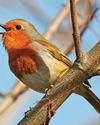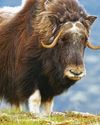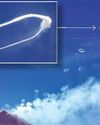
Slime, gunk, goo. Whatever you call it, are you fascinated or disgusted by the slippery stuff – or a bit of both?
Yes, gloop is gross, but slime has been sold as a toy for almost half a century and is more popular than ever. Some people love making slime and spend hours stretching and squishing it between their fingers. Even famous people seem happy to have buckets of yellow yuck and green gunge hurled in their faces or dumped all over them on TV. Neither solid nor liquid, but somewhere weirdly in-between, it’s no surprise that gunk makes some people gag. Yet many others would love to get seriously slimed. So, if it’s so disgusting, what is its appeal? Could it be that slime somehow... is our friend?
It’s snot what you think
None of us are strangers to slippery slime. Our bodies are full of it. A thick layer of mucus protects your stomach walls and helps food move through your guts. It’s surrounds your eyes and coats your mouth and throat. It shields your organs, stopping them from drying out. In the nose and lungs, snot traps and flushes out unwanted body invaders, such as infectious bacteria, dust and smoke.
If you’re wondering how it got there, many of your body’s tissues produce it. You’ll be most familiar with the stringy stuff from the snot you snort out of your nose. Now, imagine being made to swallow more than a litre of that yucky stuff. Well, sorry to inform you, but you already do just that every day, without even realising it.
Healthy human bodies produce about 1.5 litres of mucus per day. You only really notice it when you have an infection, and it gets thicker, becoming the gross gunk that lodges in your throat and makes you dread peeping in your tissue after a hearty nose blow.
This story is from the Issue 67 edition of The Week Junior Science+Nature UK.
Start your 7-day Magzter GOLD free trial to access thousands of curated premium stories, and 8,500+ magazines and newspapers.
Already a subscriber ? Sign In
This story is from the Issue 67 edition of The Week Junior Science+Nature UK.
Start your 7-day Magzter GOLD free trial to access thousands of curated premium stories, and 8,500+ magazines and newspapers.
Already a subscriber? Sign In

SUGAR RUSH
Join the candy craze as Claire Karwowski studies the sugary science of sweets.

Wildlife watch
Stevie Derrick shows you what to spot in nature this month

The Sixth Sense
Could humans have more than five senses?

Catherine Heymans
Meet the starry-eyed astronomer who loves backyard stargazing.

WORLD OF WHIFFS
Stevie Derrick follows her nose to track down the world's grossest stinks and nastiest niffs.

Dogs can understand names of objects
Humans enjoy talking to their dogs. If you have a four-legged friend of your own, you might have taught them to respond to commands like \"sit\" and \"stay\".

Smoke rings in the sky
In April, videos were filmed of Mount Etna, a volcano on the Italian island of Sicily, puffing what looked like smoke rings into the sky.

Huge gold nugget found
A gold nugget that could be the largest ever found in England was recently put up for auction. Metal detectorist Richard Brock discovered the nugget on farmland during an organised expedition in Shropshire last year.

Evolutionary tree shows birds in a new light
Researchers have produced the most detailed evolutionary tree of birds ever.

The largest plane to ever fly
Take a first look at the mighty Radia WindRunner aircraft